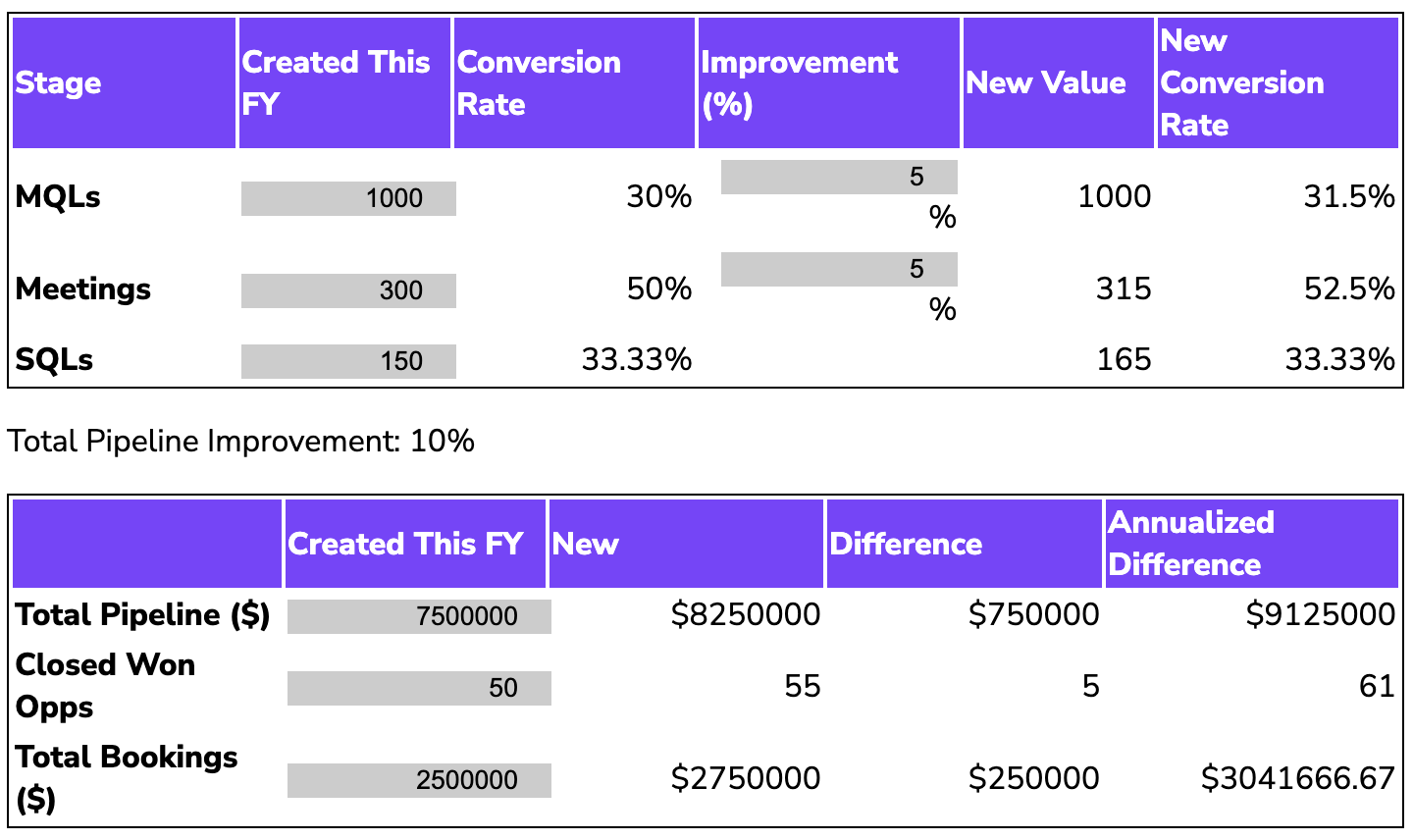We’ve all been at companies where annual marketing planning felt unstructured, pointless, exhausting, or immediately obsolete. But at Sponge, I’ve also had the joy of working with teams that started the year knowing:
- The big changes Marketing will make each quarter
- How they’ll collaborate and tackle the brass tacks of campaign execution
- And their monthly lead/opportunity targets and monthly budget
>> Related: How to Assess Your Marketing Maturity (and Then Evolve It) <<
Secrets from successful annual marketing plans
What made these teams so successful at annual planning?
- Marketing tackled planning in layers, getting more specific each week for ~4 weeks.
- “Planning season” was optimistic and open. Everyone contributed ideas, triaged priorities, and admitted defeat on projects that had soured.
- Product marketing pulled strategies out of cerebral PPT slides and into concrete, measurable campaigns.
- Leaders acknowledged change is emotional, and communicated early/often.
- There was no magical thinking. The demand gen team modeled lead targets that were realistic and achievable given current conversion rates. And they showed what was possible if budget grew, or if conversions rates improved slightly.
- Content marketing brainstormed a couple big/bold assets for the year, but also committed resources to repackaging and refreshing existing assets.
- Though they couldn’t set a final budget, leaders articulated percent allocations by region, channel, and funnel stage; and capped the cost-per-lead and cost-per-opp.
- Teams made concrete plans for morale, professional development, and team-building.
Template please!
I spent hours pulling together inspo from these dream teams and created a 42-page annual marketing plan workbook. Its simple exercises help Marketing:
- Analyze which channels you’re using now, what you spent, and how they perform. You’ll quickly see where you have no coverage or appalling waste.
- Write campaign strategy briefs that tease out the persona you’re targeting, your unique promise to them, and the evidence that backs it up.
- Map the content you need for each campaign buyers’ journey, and how you’ll fully distribute each title.
- Draft report requirements, and wireframe a Marketing dashboard.
- Compare your funnel conversion rates against industry standards.
- Create a martech roadmap to replace or augment tools.
- Scrutinize agencies and freelancers.
- Negotiate how many opportunities Marketing will contribute so Sales can achieve the revenue plan.
- Identify exactly how you’ll generate enough leads to fill the opp pipeline.
- Allocate budget by percentage, and forecast your costs across every channel, geo, and month.
- Navigate all these changes with your team, and reduce defensiveness.
With these exercises and templates, your annual marketing plan will be bold, aligned, and specific. I’m also happy to review your work! Just get in touch ⬇️
Real talk: hope is not a strategy! This 42-page campaign planning workbook helps you comb through stats, coordinate the team, and answer marketing’s toughest questions: What worked? What content do you need? And what can you afford?




